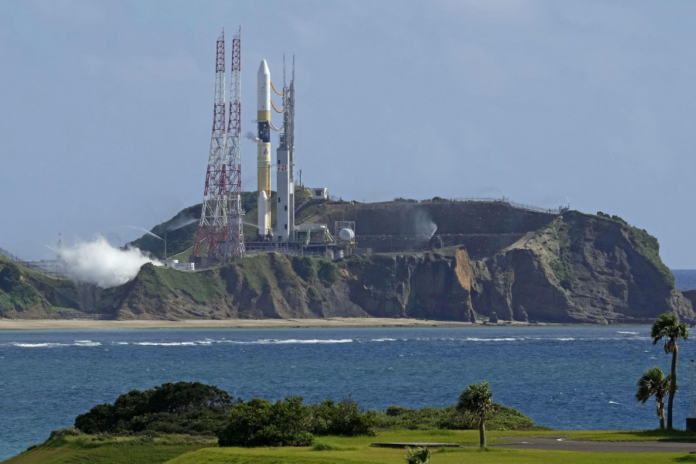Japan’s space agency postponed the launch of a rocket on Monday that would have carried the nation’s first lunar landing spacecraft due to high winds, according to the rocket’s operator Mitsubishi Heavy Industries (MHI).
Despite having a 98% success record, the Japan government suspended the launch 27 minutes prior to the scheduled liftoff due to unfavourable upper atmospheric wind conditions.
“High-altitude winds hit our constraint for a launch… which had been set to ensure no impact from debris falling outside of pre-warned areas,” said MHI H-IIA launch unit chief Tatsuru Tokunaga.
According to Michio Kawakami, safety manager for the Japan Aerospace Exploration Agency (JAXA), strong winds of about 108 kph (67 mph) were seen at a height of 5,000-15,000 metres (16400-49200 feet). He said that there may have been several typhoons nearby Japan that altered the wind patterns.
The new launch date has not been set, but due to necessary procedures like refuelling, it won’t happen before Thursday, according to Tokunaga. According to MHI and JAXA, a launch could occur as late as September 15.
On Monday morning, the rocket was scheduled to launch from JAXA’s Tanegashima Space Centre in southern Japan. However, the launch had already been delayed twice due to inclement weather since last week. The launch will be the 47th H-IIA Japan has made.
Japan’s moon mission
The rocket was carrying JAXA’s Smart Lander for Investigating Moon (SLIM), Japan’s first moon mission. The Hakuto-R Mission 1 lander from Tokyo-based firm ispace (9348.T) crashed on the moon in April.
After Monday’s launch, JAXA intended to begin SLIM’s lunar orbit landing in January or February 2024, following the success of India’s Chandrayaan-3 moon exploration mission this month.
The “moon sniper” SLIM mission, according to JAXA, aims to achieve a high-precision landing within 100 metres of its target on the moon’s surface, which represents a significant technological advance over the traditional lunar-landing accuracy of several miles.
The X-Ray Imaging and Spectroscopy Mission (XRISM) satellite, a collaboration between JAXA, NASA, and the European Space Agency, is also being carried by the rocket.
Since 2001, the H-IIA, which JAXA and MHI jointly developed, has served as Japan’s premier space launch vehicle, launching 45 times successfully. But following the failure of JAXA’s new medium-lift H3 rocket on its debut in March, the organisation delayed the launch of H-IIA No. 47 for a while to look into the issue.
Japan’s space missions have recently encountered setbacks, with the launch failure of the Epsilon small rocket in October 2022, followed by an engine explosion during a test last month. This is despite its objective to send astronauts on the lunar surface in the late 2020s.



